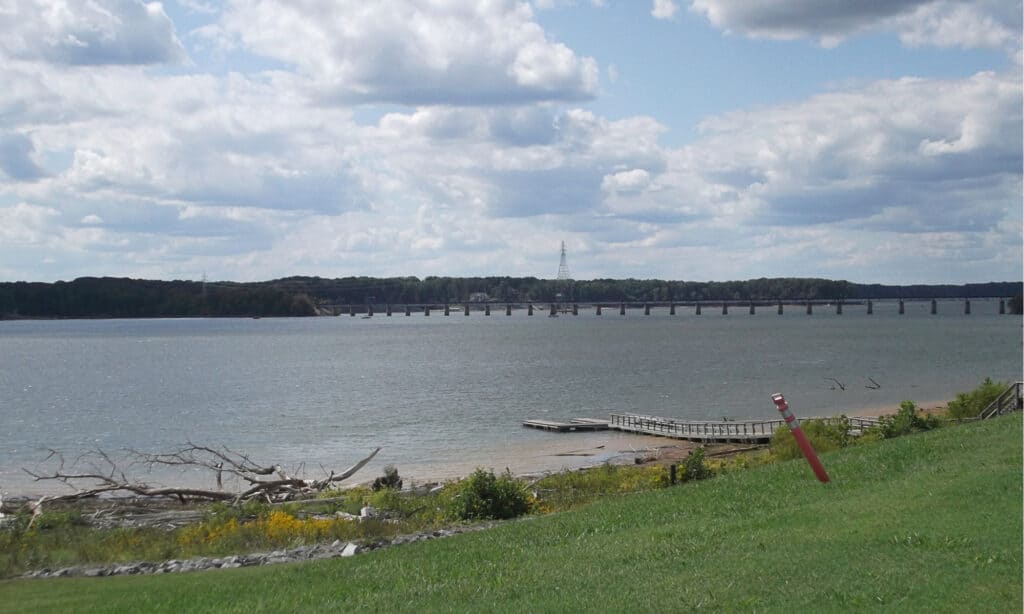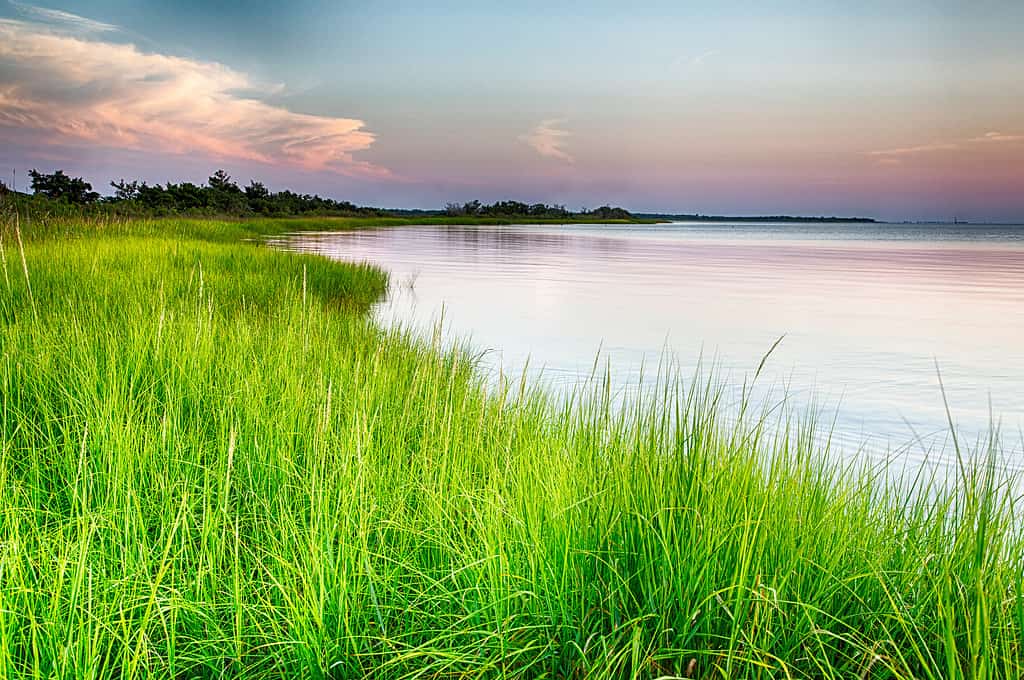When it comes to dangerous North Carolina rivers, most of the focus always seems to center on Cape Fear River, an ironically apt name. Cape Fear isn’t carrying around such a nefarious label because it’s full of ravenous alligators and man-eating bullsharks.
It’s dangerous because of years of heavy pollution and a mysterious and haunting relationship with those who dare to enter its depths. Back in mid-July of 2017, two kids drowned in Cape Fear. Why is this significant? Because they drowned in a river that’s surprisingly calm. Cape Fear is anything but a whitewater river.
As far as other rivers, the North Carolina Department of Environmental Quality claims that many of North Carolina’s rivers are fundamentally toxic from one end to the other. These toxins include fecal coliform, mercury, and even arsenic.
The Most Dangerous North Carolina Rivers
Without a doubt, Cape Fear leads the way as one of North Carolina’s most dangerous rivers. But it’s not the only river in North Carolina known for claiming the lives of drowning victims.
Dan River

The Dan River is one of the largest rivers in North Carolina.
©J. M. Pavlic III/Shutterstock.com
In 2021, a family of tubers, expecting nothing more than a lazy day on the river, lost their lives in the Dan River when they went over the dam. Authorities found three bodies on the same day but discovered the bodies of seven-year-old Isaiah Crawford and thirty-year-old Teresa Villano a few days later
The American Whitewater Accident Database lists a number of contributing factors, including darkness, failure to wear life vests, inexperience, poor group management, and poor planning. Two years later, the Dan River claimed another life.
The man in question was sixty-three years old and flipped his tube over in the river. Emergency crews rushed him to the hospital where he apparently died of a heart attack. The story was big news at the time, considering it came after the infamous death of the previous five people.
Nantahala River
The Nantahala River pops up frequently on the American Whitewater Accident Database, running all the way back to 1990. It’s one of the most dangerous North Carolina rivers. In May of 1990, Ian Jenkinson flipped his canoe and trapped his foot between rocks on the riverbed. Though located and pulled from the river, Ian was already dead and additional attempts to resuscitate him failed.
In 1993, Jason Algood also flipped his canoe and also caught his foot in nearly the same place as Ian did, three years prior. Though he escaped his position, the waterfall carried him over, where he struck a submerged rock. Rescue attempts unfortunately failed.
Dan River claimed the life of Jack Meadows in August of 1999 and Ryan Allison a month later. In 2003, Joel Hayes died in the Nantahala River, followed by an unidentified individual in 2004. In 2007 and 2008, Nantahala claimed two more lives. Fortunately, there was a bit of a break after 2008.
The river failed to claim another life until 2022 when Alicia Monohan passed away while teaching a Swiftwater Safety Class. As an experienced and seasoned whitewater specialist, Alicia didn’t cause her own death through lack of safety. While the reason behind her death is unknown, it was probably a heart attack or another physical ailment.
Cape Fear

Cape Fear River
©Gary C. Tognoni/Shutterstock.com
The Cape Fear River is a shade over 200 miles in length. To the casual observer, it’s nothing more than another lazy river—beautiful to look at in places but no more deadly than anything else throughout nature and the American wilderness.
However, Cape Fear, according to The Fayetteville Observer, is at the very top of the most dangerous North Carolina rivers. It’s claimed more lives than any other river in the state, mostly because of its hidden dangers. Though it appears lazy, the current beneath the seemingly slick and slow-moving surface is powerful.
Cape Fear has a number of huge dropoffs, where one step will carry you well over your head in the water. If you happen to flip over in a canoe or a boat, the lack of footing is surprising. The river is also full of little holes that children can accidentally step into.
In 2017, two teenagers died trying to cross the river. There was no struggle—no wild and last-second attempt to lunge for the safety of the edge. They simply swam out into the water and vanished beneath the surface.
Other Dangerous North Carolina Rivers
In 2018, North Carolina recorded the deadliest year on record, in terms of deaths on waterways throughout the Tarheel State. Jennifer Gail Martin flipped her craft and drowned in the North Toe River. She wasn’t wearing a life preserver. The Yadkin River also claimed a life.
In most instances, kayakers, canoers, and tubers weren’t wearing life jackets, which seriously heightens the odds of drowning. In March of that year, Maria Noakes drowned in the Cheoah River. Witnesses discovered her boat, pinned along the river bank before finding her body farther downstream.
Later, in April, William Halliburton pinned his kayak between two rocks on the Class IV rapid. The water rushed over him and he drowned soon after. In May, Delmer Melvin Garratt pinned his kayak in much the same way, except he was on the French Broad River.
In many of the above cases, with the exception of the nine-member family on the Dan River, the drowning victims were experts in their craft. It goes to show just how dangerous some of these rivers are, whether it’s a class IV rapid or a lazy, winding waterway.
Those who aren’t experts typically drown in these rivers because they fail to wear life preservers, something that makes all the difference in the world for someone who doesn’t spend a lot of time on the water.
Final Thoughts on Dangerous North Carolina Rivers
Though some of these rivers, such as Cape Fear and Nantahala, have a long and infamous history of swimmers drowning in their waters, the ultimate danger is going into any river in the first place. So long as the right safety protocols are in place, it mitigates that danger to a large degree.
However, even the best of the best find themselves wanting when challenging the might of nature. You never know when nature is ready to take its due.
The photo featured at the top of this post is © Craig Zerbe/Shutterstock.com
Thank you for reading! Have some feedback for us? Contact the AZ Animals editorial team.






